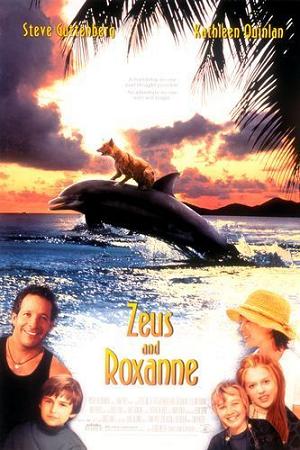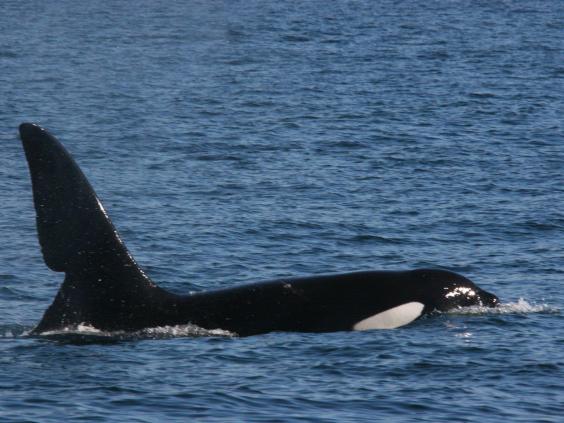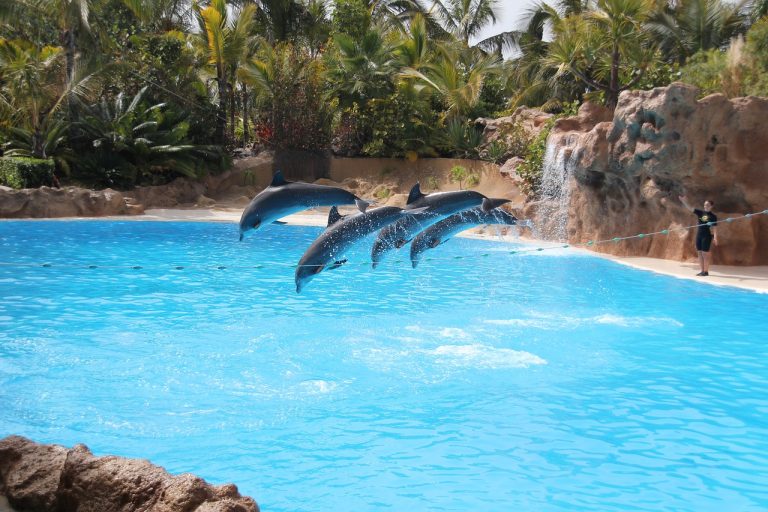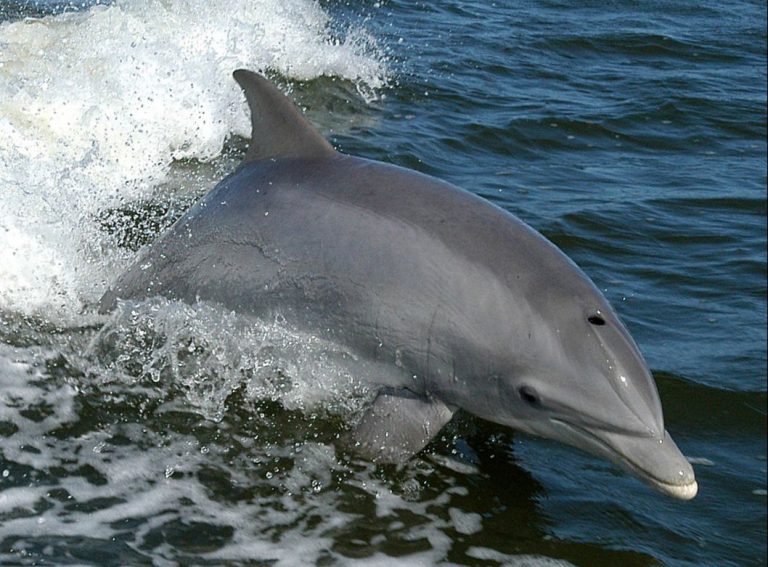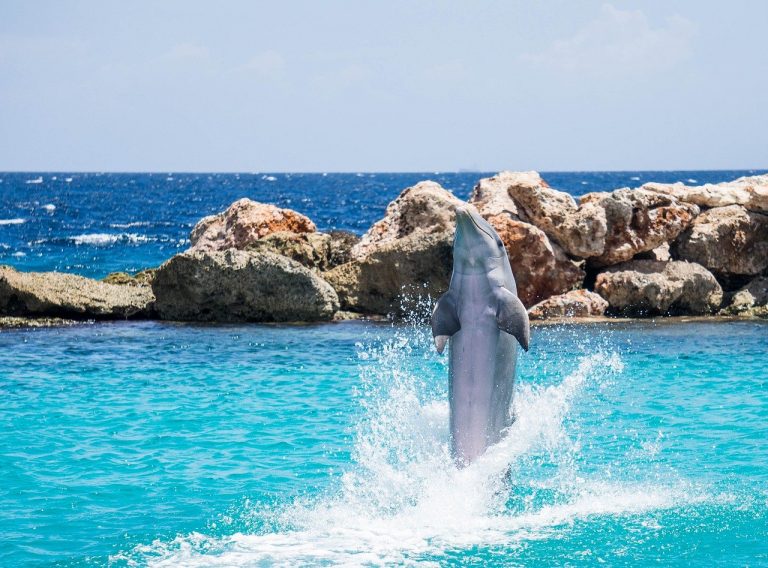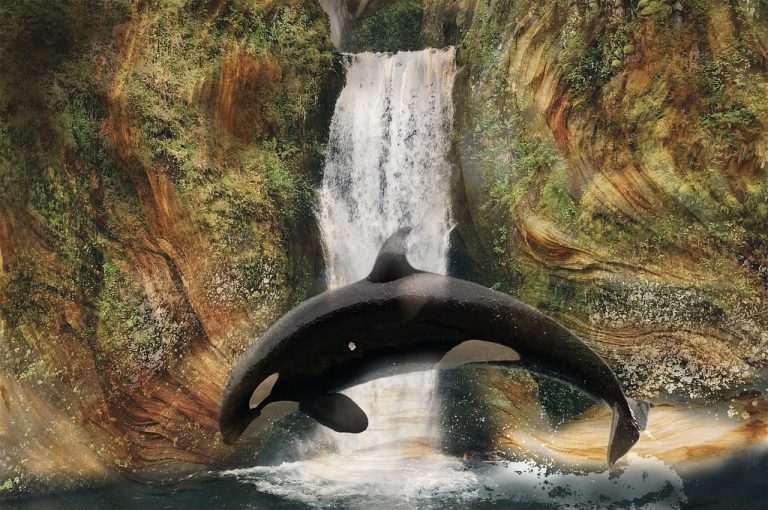Species Profile: The Atlantic Spotted Dolphin
The Atlantic Spotted Dolphin is a friendly and well-known species especially to people in the Bahamas.
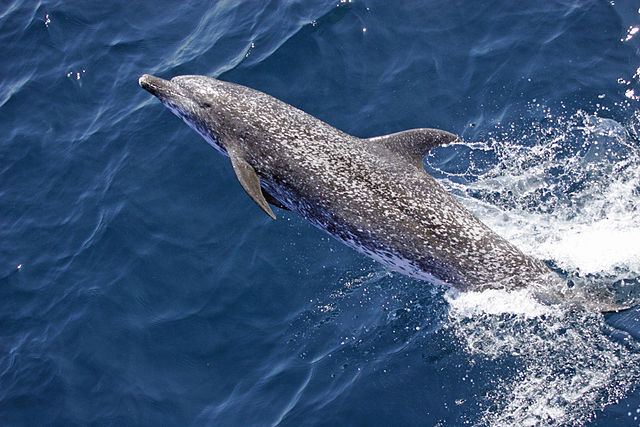
The Atlantic Spotted Dolphin is a cetacean species endemic in the Gulf Stream of the North Atlantic Ocean and other parts of the Atlantic. Adult individuals are easy to identify by the distinctive spotted coloring all over their bodies.
This a relatively smaller-sized dolphin when compared to other better-known dolphin species. The Atlantic spotted dolphin is a stoutly-built but compact creature and sports a moderately long, chunky beak. Typically, the beak is white-tipped and some individuals may have white ‘lips’.
The main body color is a dark cape, gray sides, and a whitish underbelly. Spots begin to appear and increase as the dolphin ages. Newborn calves are completely spotless, juveniles are lightly spotted and adults heavily spotted.
The Atlantic spotted dolphin is often mistaken for the pantropical spotted dolphin (Stenella Attenuata) on of its closest relatives. But a few spotless adults are more easily mistaken for the bottlenose dolphins.
Interestingly, this dolphin has up to 10 distinct vocalizations including whistles, buzzes, squawks and dog-like barks. Also, they are known for being very social and are very good at acrobatic aerial displays.
In addition, out in the wild, these dolphins commonly mix with other dolphins especially the common bottlenose dolphin species.
The Atlantic Spotted Dolphin is listed in the IUCN Red List as a Data Deficient species.
1) Scientific Name
Stenella Frontalis
2) Scientific Classification:
- Kingdom: Animalia
- Phylum: Chordata
- Class: Mammalia
- Order: Cetacea
- Family:Odontoceti
- Genus: Globicephala
3) Life Expectancy
4) Average/Maximum Length
Both sexes of the species grow to about 2.3 meters (7.5 feet) at adulthood.
5) Average/Maximum Weight
Female weigh 130 kg (287 lbs) and males are slightly larger at 140 kg (309 lbs).
6) Maximum Swimming Speed
These dolphins are very swift swimmers known for bow riding after fast boats and their acrobatic displays.
7) Interaction With/Danger To Humans
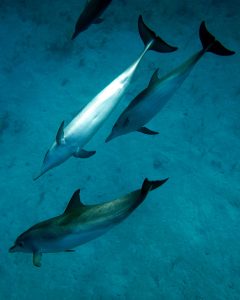
Because of continuous contact with humans, some populations of Atlantic spotted dolphins have become habituated to human contact. This is particularly noticeable in dolphins around the Bahamas.
However, this species is not commonly held in captivity but is rather commonly sighted through cruises and swim with dolphins programs.
Unfortunately, they are the occasional target of harpoon fishermen. Therefore, some numbers of them get trapped and killed every year in gill nets. But these activities do not constitute a threat to species for now.
The Atlantic Spotted Dolphin is a fast-swimming, friendly species and it will approach boats out in the wild.
8) Reproduction Details
Like other mammals, they produce live offspring. Newborns are typically uniform gray/white with just one or no spots at all.
Once the mother weans her calf, the speckling on their bodies begin to appear at between 3 and 4 years old. Clear mottling on their skin is noticeable at the juvenile age (between 8 and 9 years).
Newborn calves measure 1 meter.
9) Diet and Hunting Pattern Of The Atlantic Spotted Dolphin
The Atlantic spotted dolphin has a wide and varied consisting mainly of small schooling fish, cephalopods, and benthic invertebrates.
10) Alternative Names
- Spotted Porpoise
- Bridled Dolphin
11) Population And Conservation Status
Although there is adequate information about this species in some areas, for instance in the Bahamas, that’s not the case in other areas.
Meanwhile, the Atlantic spotted dolphin is commonly hunted for its meat in parts of the eastern Caribbean and West Africa. The fact that the actual catch figures are lacking makes the situation also worrisome.
Furthermore, these creatures are frequently caught incidentally through entanglement in fishing gear.
For now, there are no exact figures for their total population. Although in the Bahamas, there used to be just about 80 of these mammals 20 years ago. Today, their population is at least 200.
A conservative estimate of Atlantic spotted dolphin population worldwide is approximately 100,000 individuals.
The IUCN lists it as a Data Deficient species. Similarly, the Conservation Action Plan for the World’s Cetaceans marks them as DD meaning Data Deficient.
Another challenge is that due to their similar appearance to other dolphins in their range, it is difficult to be sure of the Atlantic spotted dolphin’s population.
12) Ancestry and History
French zoologist Georges Cuvier first described the Atlantic spotted dolphin in 1828.
But the considerable difference in appearance of individuals within this species continues to cause some uncertainty regarding its exact taxonomic classification among specialists. Consequently, there’s just one recognized species for now.
However, that might change soon owing to a large, particularly spotted variant endemic in Florida waters. It’s likely this variant will be classified as a formal subspecies or declared a distinct species.
Rich LeDuc published data suggesting a closer relationship between the Atlantic spotted dolphin and bottlenose dolphins (of the genus Tursiops) than to even other members of its own genus (Stenella). Atlantic spotted dolphins commonly mate with bottlenose dolphins especially in the Bahamas.
13) Distribution and Habitat
You can find this species in the temperate and tropical areas of the Atlantic Ocean. In particular, they are common in the western end of the Gulf Stream (between Florida and Bermuda).
Around the Bahamas, there is a thriving tourism industry that allows people swim with dolphins.
Other sightings exist around the Gulf of Mexico, off the Azores and Canary Islands, Cape Cod, Spain, Rio Grande do Sul (Brazil), and west Africa.
In most places they inhabit, they live in shallow waters although they may frequently swim over the continental shelf or in deep oceanic waters and islands like the Azores.

